
The Onix team has been assisting Learning Pool in building educational content and technology for international customers in the public and private sectors.
Learning Pool’s achievements during our cooperation are impressive, including 3.5M active learners, 98% recommendation rate, 800 customers worldwide.
So, in this article, we're going to provide our recommendations to build a viable e-learning product, share our experience, and reveal eLearning development costs.
What are the main types of e-learning websites?
Features to build a successful e-learning platform
How to build a website like Coursera, Udemy or edX
eLearning platform design best practices
Required tech stack to build an online learning platform
How much does it cost to create an online learning platform?
How Onix Can Help: Our Experience
Conclusion
FAQ
Stay tuned for valuable insights and analyses!

How Onix assisted an established EdTech company in developing e-learning solutions
What are the main types of e-learning websites?
There are a lot of different e-learning platforms today. Each type solves real problems for specific target groups.
Let's delve into the main types of e-learning websites that have gained prominence:
Course platforms
These platforms focus on hosting individual courses covering a myriad of subjects. Instructors and educational institutions create and upload content, providing learners access to a wide range of topics.
Examples: Udemy, Coursera, Skillshare.
Language learning websites
These platforms allow people to learn foreign languages online. People worldwide can connect with native speakers or tutors via live audio/video chat to master enough of a language to write correctly, carry a conversation, and much more.
Examples: Duolingo, Babbel, Rosetta Stone.
Learning management systems (LMS)
LMS platforms offer a comprehensive approach to online education, often utilized by institutions and organizations. They manage and deliver educational content, track progress, and facilitate communication between instructors and learners.
Examples: Moodle, Canvas, Blackboard.
Educational video platforms
Video content is the most popular content since it allows learning faster and more efficiently than text. These platforms leverage the power of multimedia to enhance the learning experience, offering a dynamic and engaging way for users to acquire knowledge.
Examples: Khan Academy, YouTube EDU, TED-Ed.
How-to websites
This type of e-learning website provides step-by-step instructions, guides, and tutorials on a wide range of topics. These websites aim to assist users in acquiring new skills, completing tasks, or solving problems through detailed and easily understandable instructions.
Examples: WikiHow, eHow, Lifehacker.
Professional development websites
Tailored for career advancement, these platforms offer courses and resources to enhance professional skills. They cover a broad spectrum of industries and are ideal for individuals seeking to upskill or transition to a new career.
Examples: LinkedIn Learning, Udacity for Business, Pluralsight.
Digital libraries
Digital libraries are online repositories that house a vast collection of digital resources, providing users access to a wide range of digital content, including texts, images, audio, video, and other multimedia formats.
These libraries aim to facilitate the storage, organization, and dissemination of knowledge digitally, making information easily accessible to users worldwide.
Examples: Google Books, World Digital Library, Europeana.

We build interactive elearning products that deliver a goal-oriented educational experience
Features to build a successful e-learning platform
The success of an e-learning platform hinges on its ability to provide a seamless and engaging learning experience. Certain core features are essential to creating a successful e-learning platform.
Here's a detailed look at these key components:
User profile
Besides the user’s name, picture, and other relevant information, the page should also include dashboards with information on courses or classes that are active, completed, and saved for the future.
History is a useful feature, especially if the platform delivers video or audio materials. Achievements or similar information make an account more likable.
Moreover, by analyzing users' profiles, you can create your content and update the recommendation.
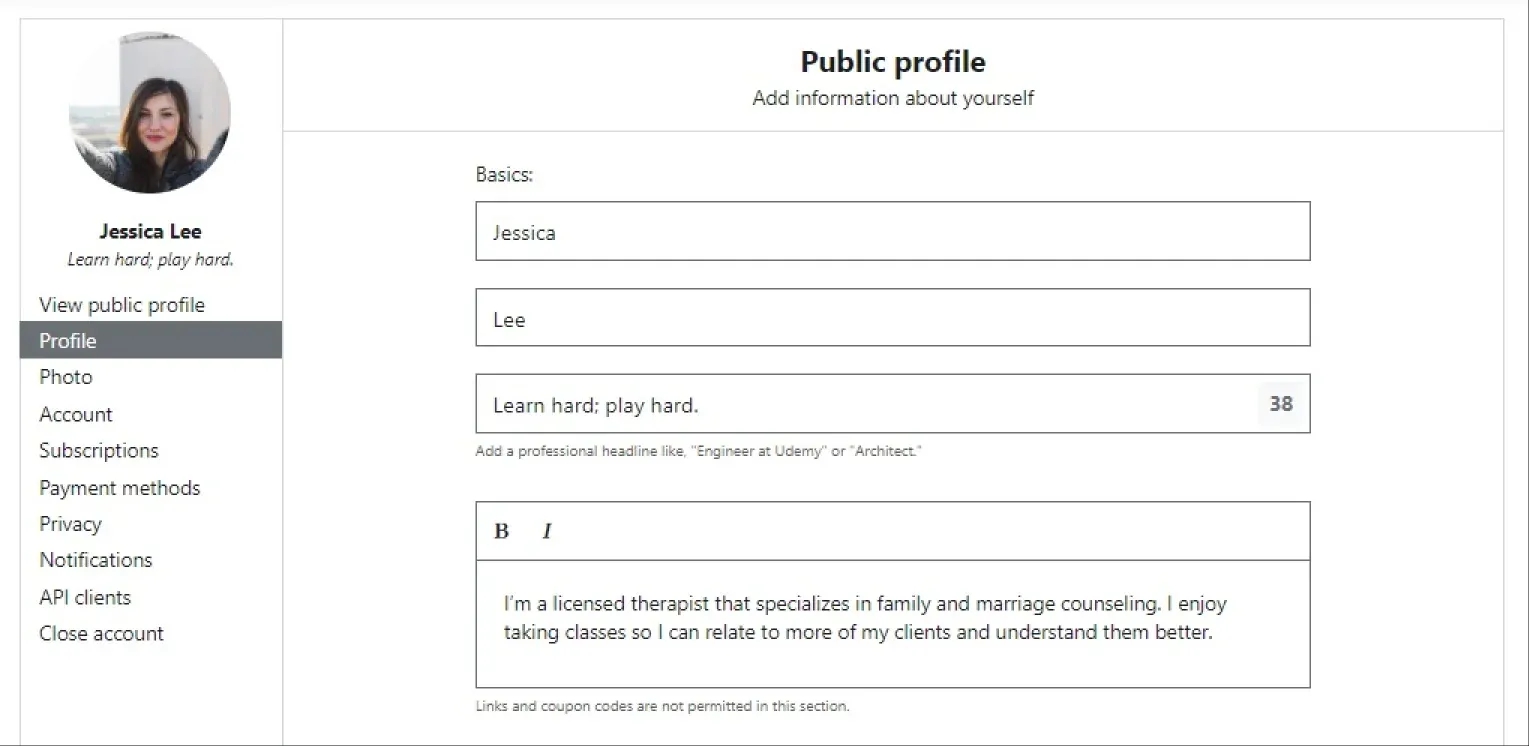
For tutors, the profile page should contain more information about their experience, degrees, and the courses published.
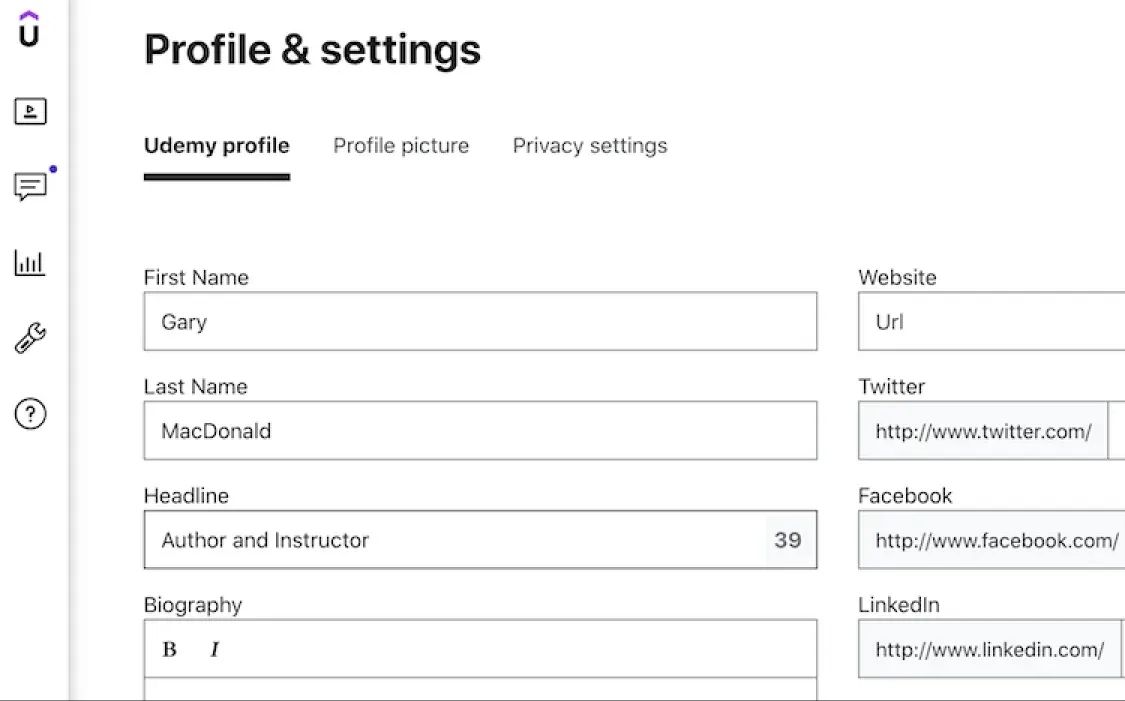
Search engine
Several search options will be necessary to help users find courses, tutors, and educational materials on your website. That includes categories, filters, keywords, and recommendations of similar courses.
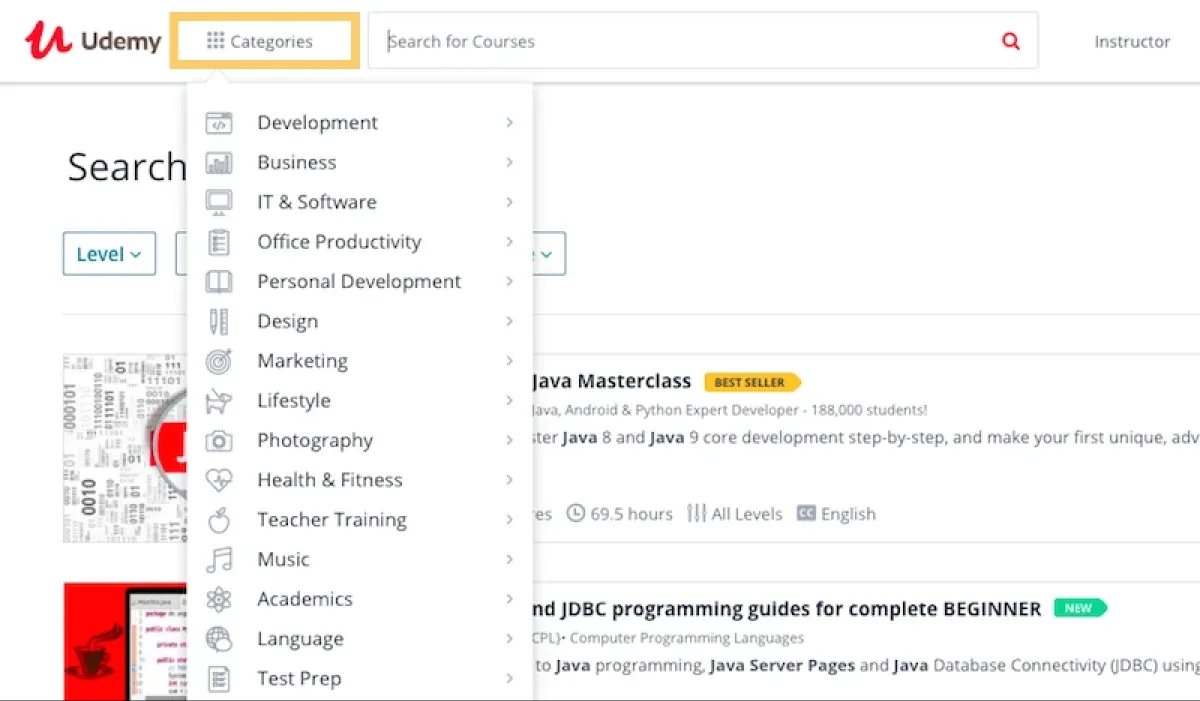
Multimedia integration
Support for various multimedia elements, such as video lectures, interactive simulations, and animations, enhances the learning experience. A successful e-learning platform should seamlessly integrate multimedia to cater to different learning styles and engage users effectively.
Courses page
Every course shall have its page with a detailed description, short demo, content (brief summary of what is in the course). If applicable, the cost of online courses should be clearly stated. The pages can also have a review area.
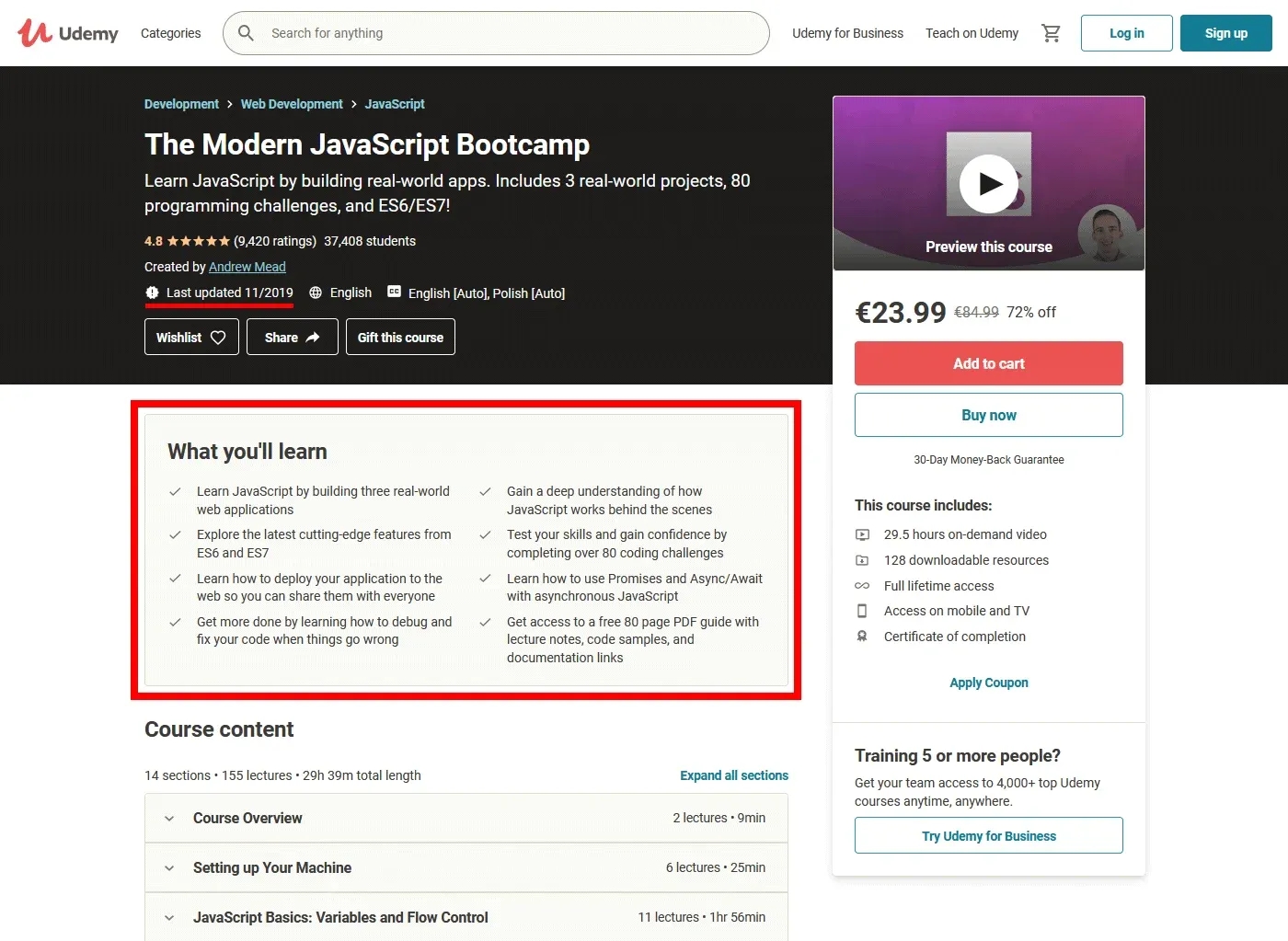
Read more: What Does It Take to Build an e-Learning Platform
Course creation and management tool
Robust tools for creating and managing courses are crucial. Instructors should be able to upload diverse content types, including text, videos, quizzes, and assignments. Features like content scheduling, progress tracking, and course updates contribute to an effective course management system.
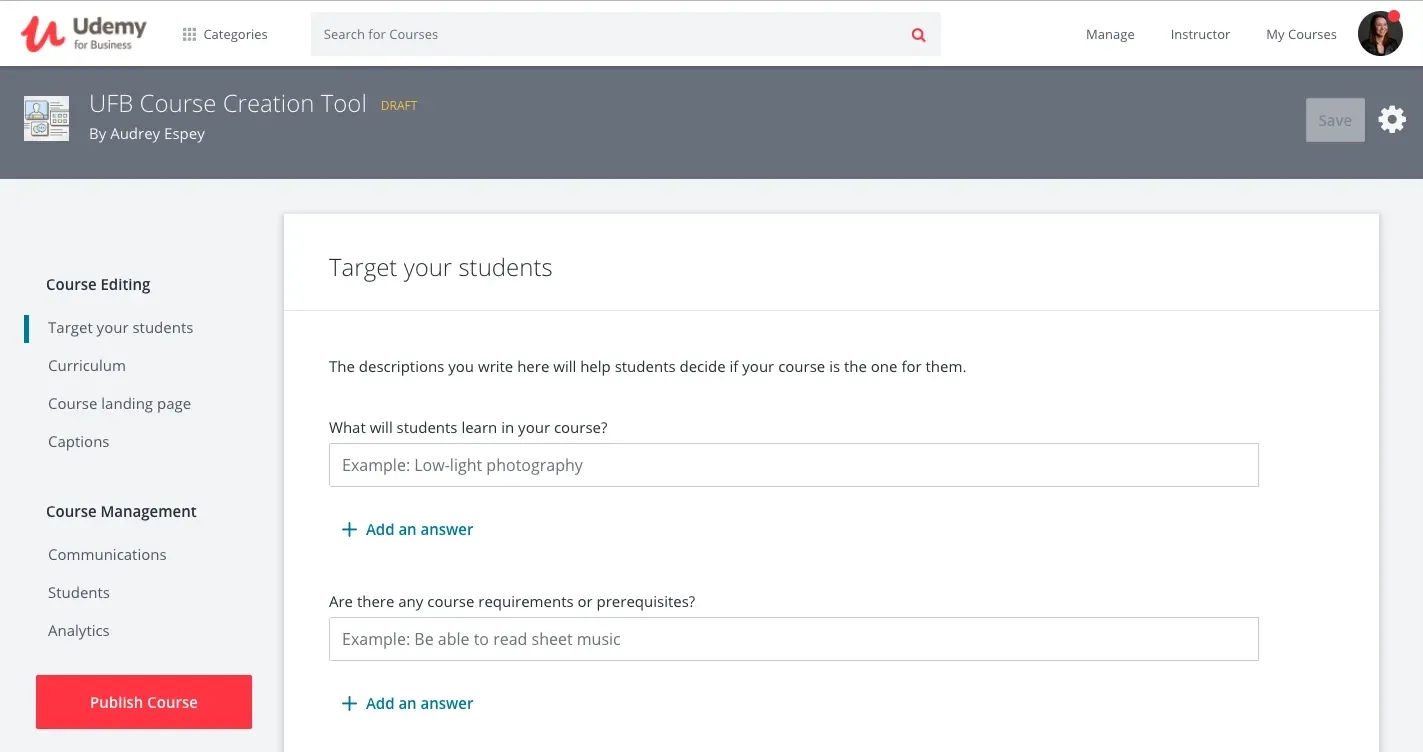
Assessment and evaluation tools
Comprehensive assessment tools, including quizzes, exams, and assignments, allow instructors to evaluate student progress accurately. Features like automated grading, instant feedback, and performance analytics contribute to an efficient assessment system.
Adaptive learning paths
Incorporating adaptive learning technology ensures personalized learning experiences for each student. The platform should analyze individual progress and adjust the learning path to address strengths and weaknesses, providing a tailored educational journey.
Payment systems
If you target only one region or country, you may use the most popular methods there, e.g., PayPal and credit card. However, adding more options for users to choose from is recommended. Also, tutors should have a convenient way to withdraw their earnings.
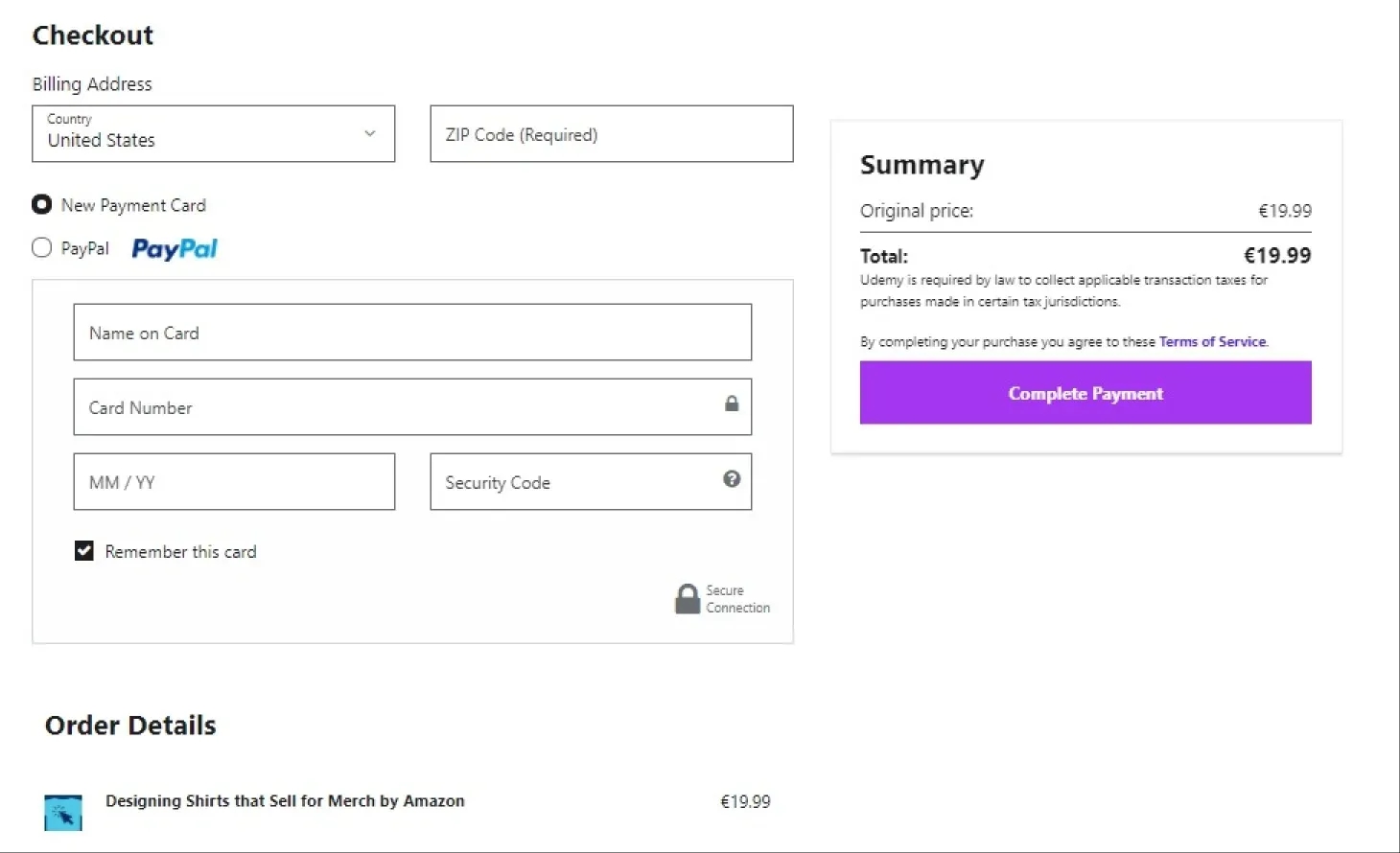
Read also: How to choose a payment system
Discussion forums and collaboration spaces
Building a sense of community is vital for successful e-learning. Discussion forums, chat rooms, and collaboration spaces facilitate interaction among students and instructors. This fosters peer-to-peer learning, knowledge sharing, and a collaborative educational environment.
Gamification elements
Integrating gamification elements like badges, leaderboards, and rewards can enhance user engagement and motivation. Gamified features make the learning process more enjoyable and incentivize progress.
Read also: AR and VR Technologies for eLearning
Analytics and reporting
Robust analytics tools provide valuable insights into user engagement, course effectiveness, and overall platform performance. Instructors and administrators can use these analytics to make data-driven decisions and improve the platform.

Learn how the Onix team created an educational mobile app for both iOS and Android
How to build a website like Coursera, Udemy or edX
Today, creating an online learning platform is pretty simple technically but shouldn’t be taken lightly. Lots of expertise, research, and effort will be required when you start devising your e-learning business plan.
Modern learners have plenty of options, so it's essential to make your platform engaging, even addictive, and make it stand out from the crowd. Let us share some advice that can help improve your odds of success.
Let your target audience and competition guide you
You can always try to engage everyone of any age and social background, but it is better to choose your niche and stick to it. Analyze your target audience’s needs and leisure habits.
Personalize the content according to their needs. It should be both helpful and engaging. A nice trick is to research your competitors and see how they approached the challenges you are facing.
If you don't know how to carry out the research effectively, you can entrust specialists with this initial stage of your product development.
At Onix, first and foremost, we conduct a product discovery stage that allows us to analyze the business idea, gather requirements and define project complexity, test the market viability and minimize development risks.

Product discovery is the initial stage of every successful software project
Create or curate the best educational content
To accomplish this, you will need excellent educators onboard. The smoothest way to develop an online course is to cooperate with universities or other educational institutions.
Even if you choose Udemy’s business model, you would need tutors to help kick-start your platform with the first courses. Skillshare and MasterClass did just that, but the latter concentrated on big names, such as Bobbi Brown or Neil Gaiman.
People prefer visual and audio content, so we recommend using various visual materials like catchy guides, useful tutorials, engaging lectures, and so on. Moreover, to effectively interact with your users, you can implement forums on a variety of subjects.
Gamify your e-learning platform
Gamification is an effective tool for engaging and motivating users. It helps to encourage people to learn more and also entertains them.
Gamification elements for e-learning platform include:
- Scoring points for each completed task
- Leaderboards to add competitive spirit
- Badges/Certificates for mastering certain skills
- Bonuses/Internal currency for completing various exercises
- Progression bars to show the completed courses/lessons
Using gamification you can significantly boost learners' motivation, engagement, and enjoyment in the training experience.
Choose your teams carefully
A template-based website is easier to build, but it will be short on customization. If you go for custom eLearning software development, outsourcing the project can make it cheaper without compromising quality.
Platforms like Clutch, where you can sort companies by country, reviews, and hourly rates, will be helpful. An agency’s portfolio should prove their experience in e-learning platform development.
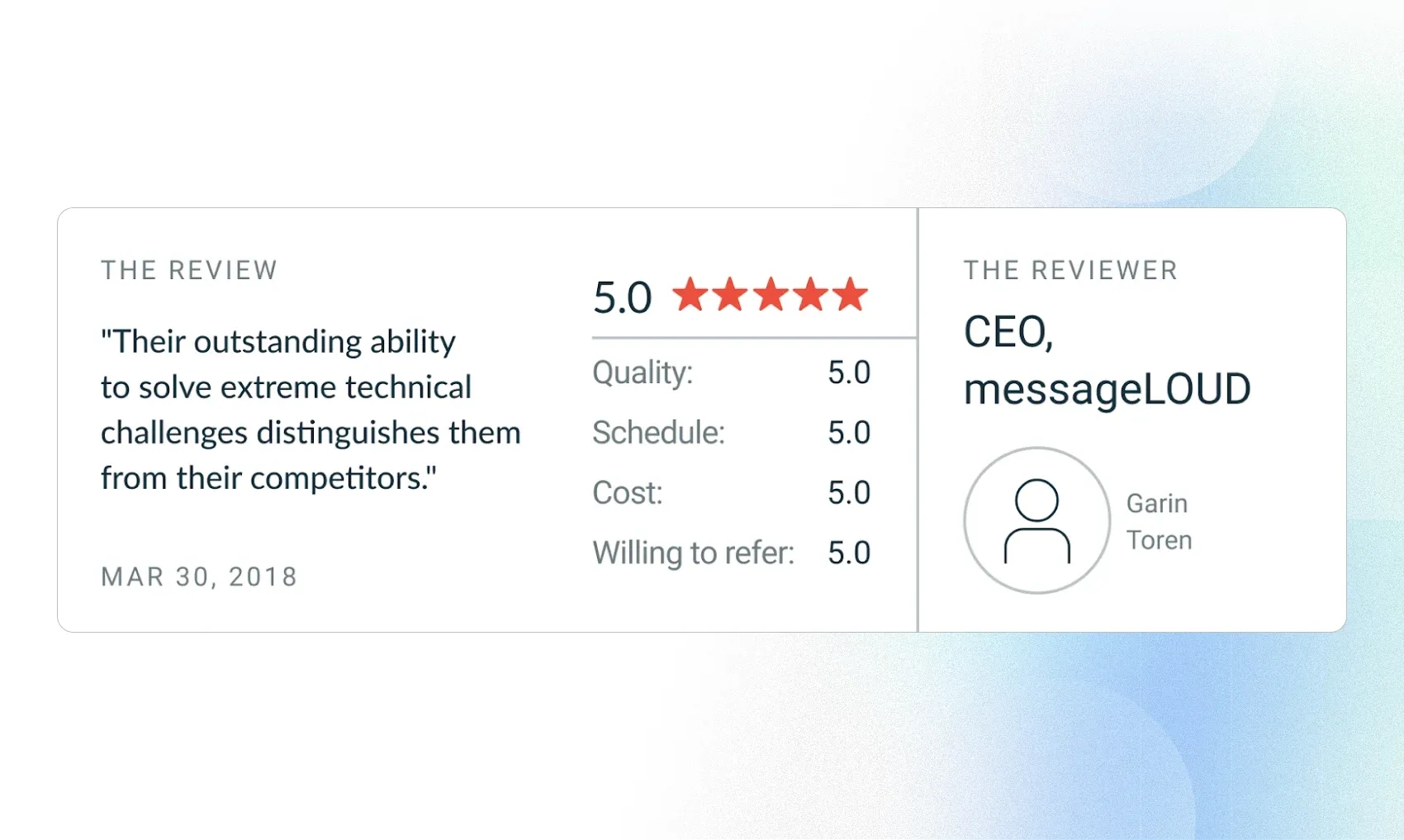
Consider a successful marketing strategy
Think about how people will learn about your educational platform. For example, you might try email marketing, social media, discounts, and demos.
Your competitors, educators on your team, and the software development agency you hire will provide more ideas. The final marketing strategy will hugely depend on your product, but it’s good to have some ideas beforehand.
eLearning platform design best practices
All components and features of your platform should be useful, interactive, and user-friendly, and further your business goals. Otherwise, they may distract users from studies and disrupt the learning experience.
Here’s what you should remember when designing the e-learning platform to let your users get knowledge in a convenient and engaging manner:
Intuitive and easy to use website structure
According to the Hubspot survey, 76 percent of people considered an intuitive site structure is the most important factor to start using it.
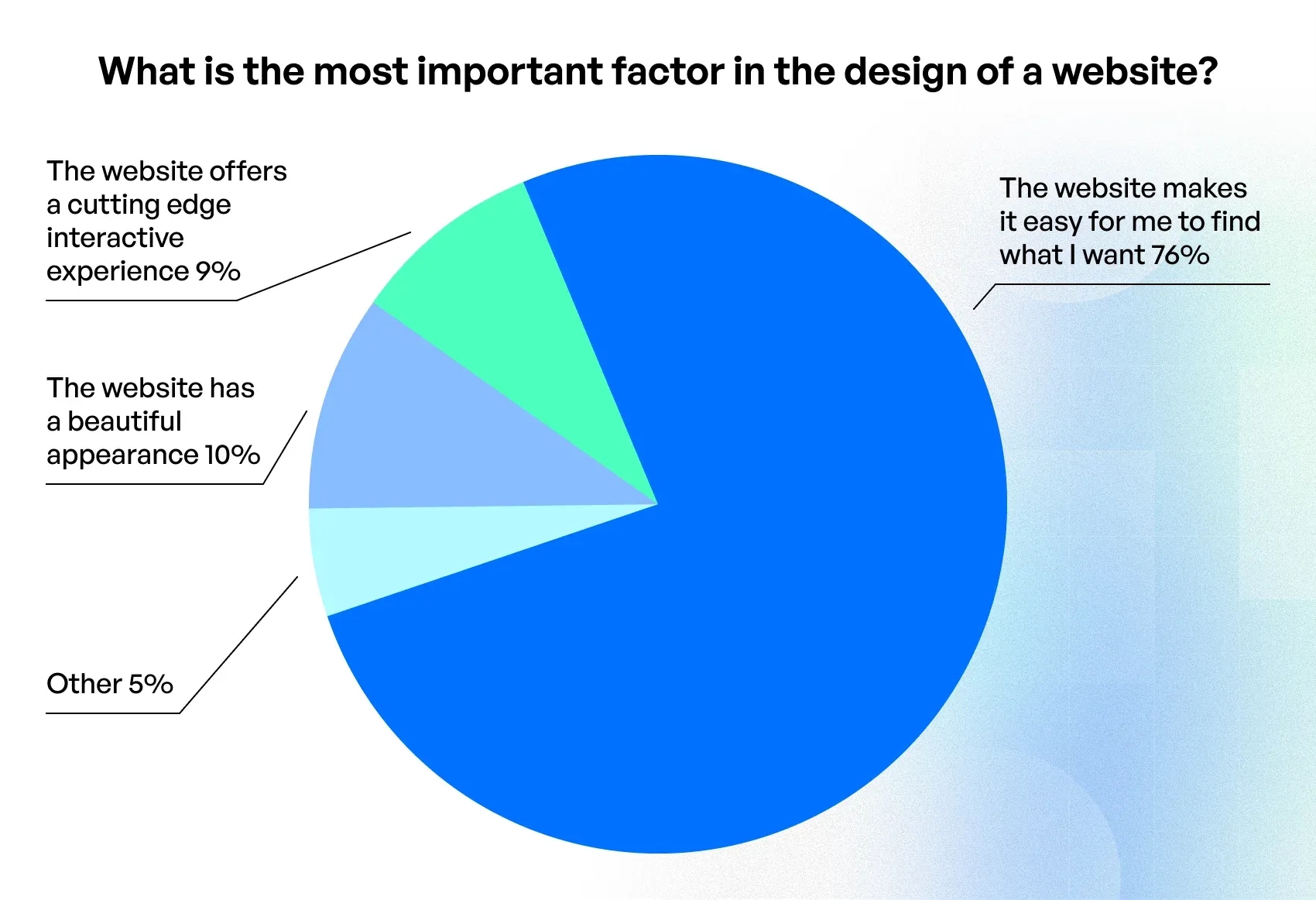
When designing an e-learning platform, obsess over the usability of your end-users. Clearly organize your website and ensure learners and tutors can easily find what they need.
Don't overload a platform with unnecessary categories, include an advanced filtering system, and place all the important features on the homepage.
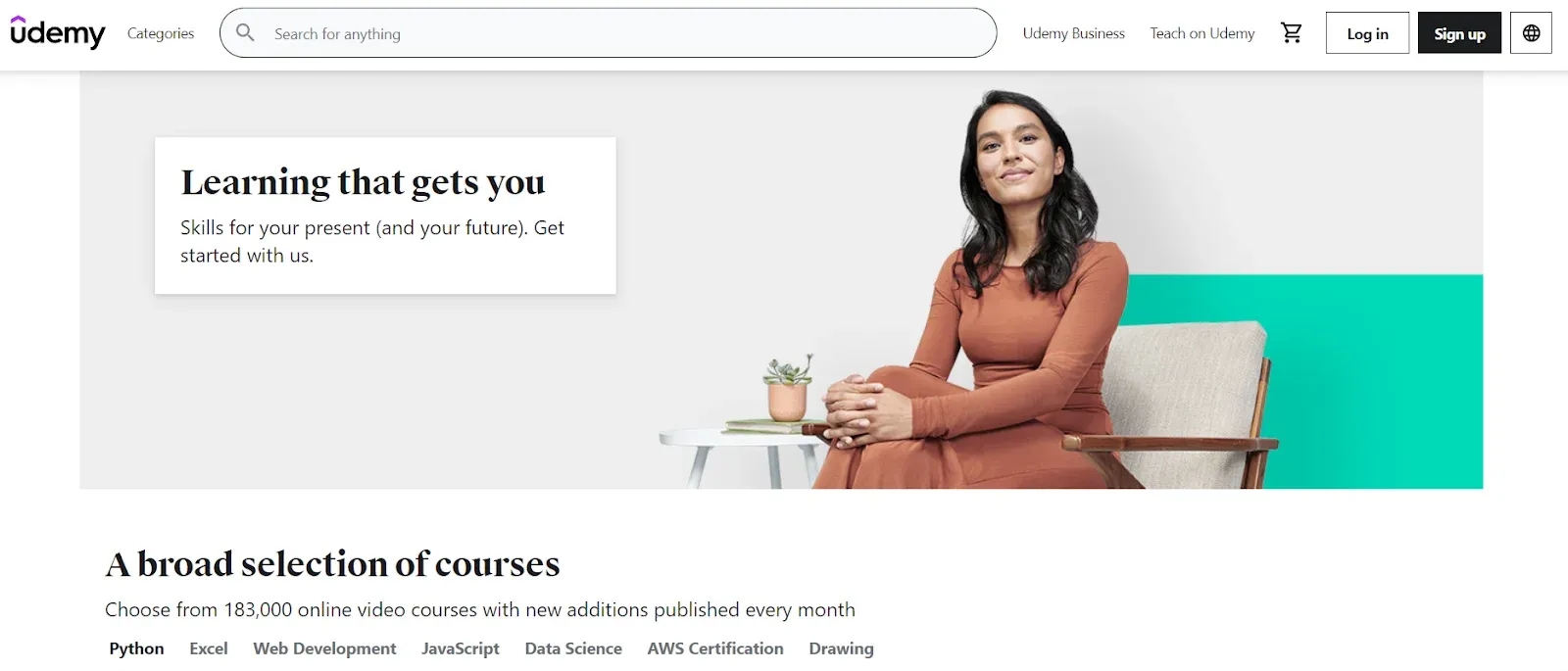
Udemy home page structure
Engaging visual design
Visual design plays a critical role in making users’ first impressions of your educational website. Colors, typography, animations, illustrations – all these visuals increase the willingness to use your platform, or vice versa force them to leave it.
People come to educational websites to get knowledge and train for required skills, but it doesn't mean your platform must be boring and tedious.
Make your website visually appealing by using an eye-catching color scheme, readable font size and typography, engaging animations. Clean and simple UI and a well-planned site structure are two keys to any lucrative e-learning platform.
Clear value proposition
To stand out from the crowd and attract more people, you should provide a clear statement. A value proposition is a powerful tool to describe your product and demonstrate the advantages of using it. Make your value proposition concise, unique, and to the point, just like Coursera did.
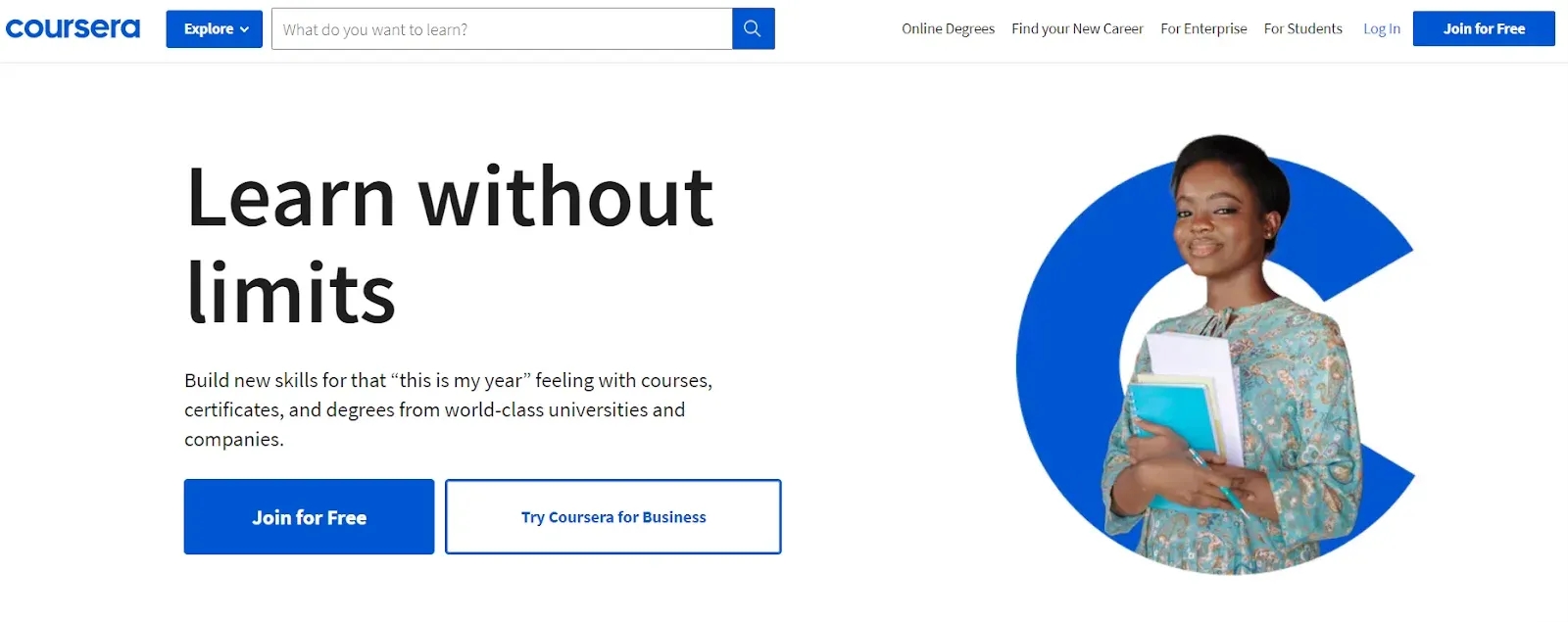
Multilingual design
If you're planning to start your e-learning business globally, you should design a multi-language website. From the design point of view, make it easy for users to find and switch between languages. We recommend placing a language switching drop-down in the header of every site page.
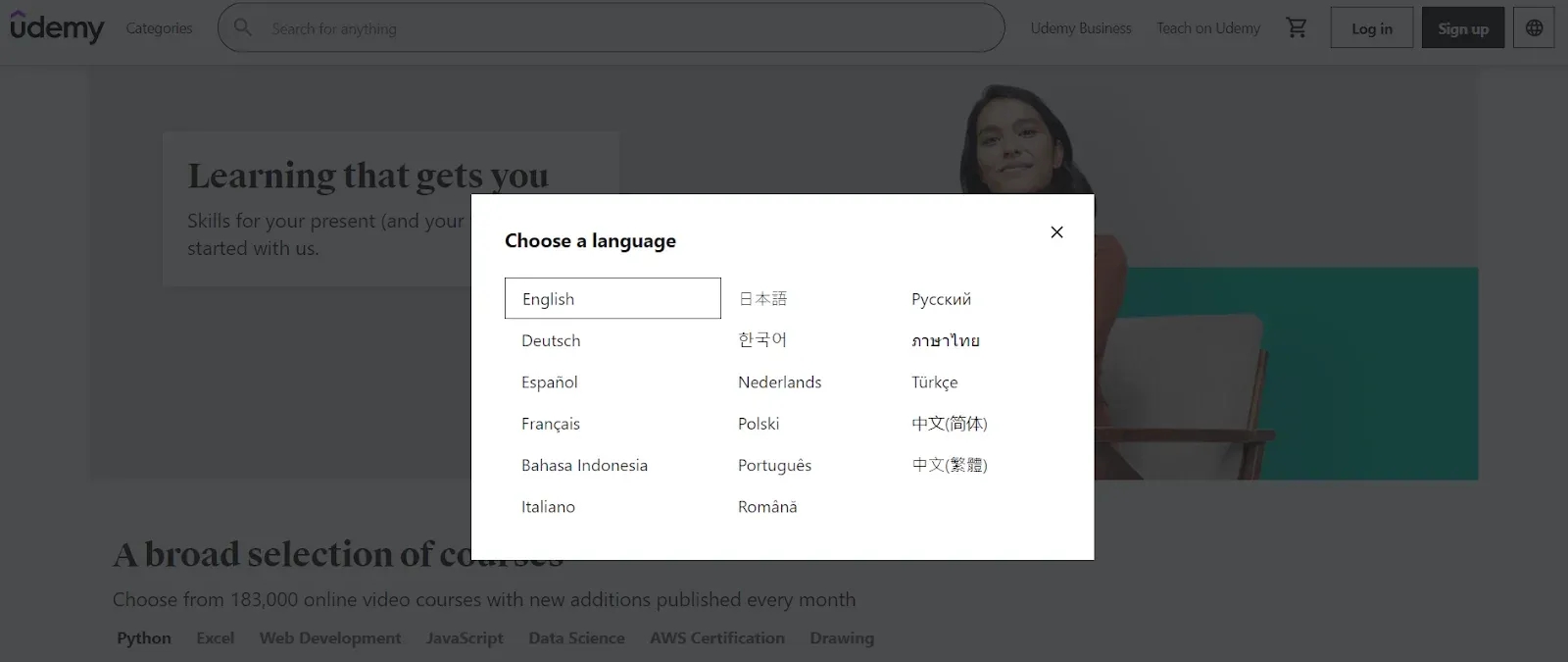
Required tech stack to build an online learning platform
The chosen technologies play a crucial role in providing quality and cost-effective e-learning application development. Below, our specialists prepared a reliable tech stack you should pay attention to when building an e-learning website.
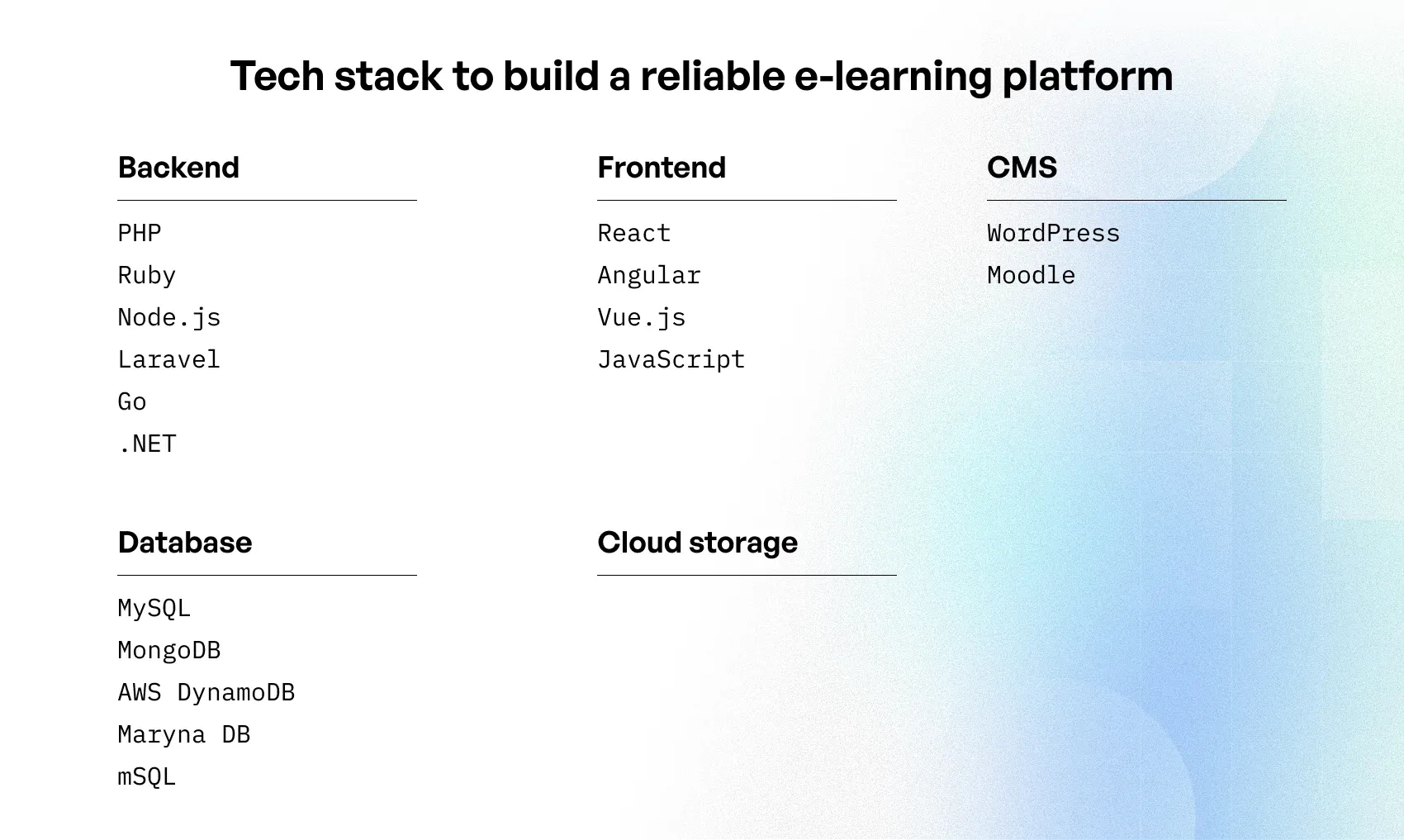
How much does it cost to create an online learning platform?
Estimating the overall price is not an easy task since eLearning development costs depend on many aspects. Some factors affecting the costs to create an e-learning website include:
- Platform features
The complexity and range of features, such as course creation tools, multimedia integration, assessment systems, and collaboration spaces, will impact development costs.
- Design
A well-designed and user-friendly interface is crucial for engagement. Investing in professional UI/UX design can contribute to a positive learning experience but may add to the overall cost.
- Technology stack
The choice of technologies, programming languages, and frameworks can influence development costs. Customizing and integrating third-party tools or plugins may also impact expenses.
- Mobile compatibility
Building a responsive design for mobile compatibility may incur additional costs. Developing dedicated mobile apps for iOS and Android platforms will add to the overall budget.
- Multimedia integration
The inclusion of multimedia elements, such as video lectures and interactive simulations, may increase development costs due to the need for specialized features and hosting resources.
- Security measures
Ensuring data security and privacy compliance may involve additional costs for implementing secure login procedures, encryption, and regulatory compliance measures.
- Licensing and compliance
Depending on the use of third-party tools, libraries, or content, licensing fees and compliance with copyright laws may impact costs.
- Maintenance and support
Ongoing maintenance, updates, and support services are essential for the continued success of the platform. Budgeting for post-launch maintenance is an important consideration.
To estimate how much it costs to build an eLearning platform, you also have to consider the number of specialists you'll need. Usually, building an eLearning website requires a team assembled as follows:
- Backend developer: 2
- Frontend developer: 2
- UI/UX designer: 1
- QA engineer: 1
- Project manager: 1
However, the number of experts may vary depending on the number of features and the project’s complexity.
Moreover, development time plays an important role in calculating development costs. Below, we provide approximately estimated hours for building an MVP version of an e-learning platform.
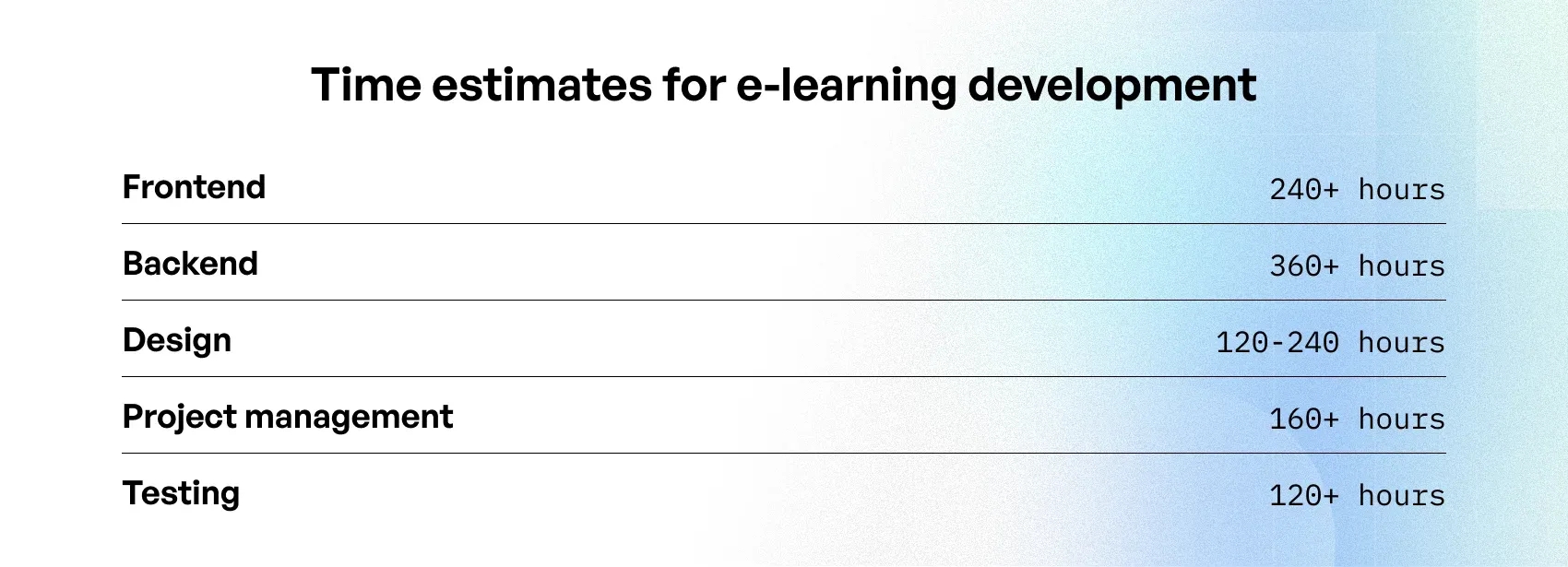
Below, we present approximate prices for building an e-learning platform.
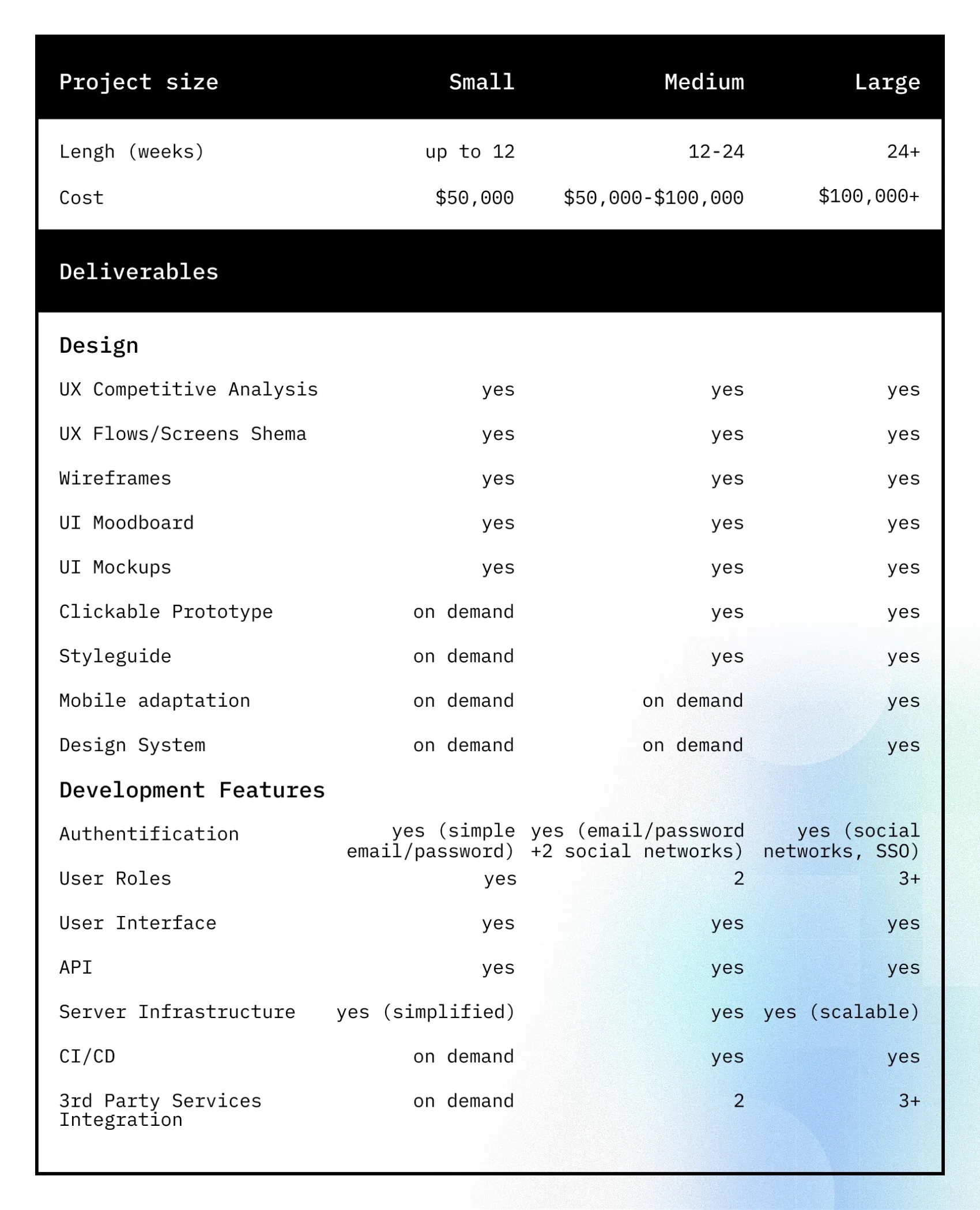
eLearning development costs
It's important to note that these figures provide a sample estimate of costs. After reviewing the estimated cost, reach out for a proposal, enabling us to align on the best strategy and provide you with an accurate quote.

How much does it cost to hire a dedicated team?
How Onix Can Help: Our Experience
Now is the very time to create a new viable product for the growing e-learning market. Onix has years of experience designing and building online learning apps, eLearning platforms, corporate training, mobile learning, and VR/AR solutions.
For example, for over two years, Onix has been assisting Learning Pool in building educational content and technology for international customers in the public and private sectors.
Learning Pool is unique in the market because it provides an entire configurable eLearning ecosystem to its customers. Their integrated eLearning platform is called Stream Learning Suite.
It provides a range of products that can be connected and work together seamlessly thanks to Learning Pool’s business killer feature, a unique system called Experience (X) API.
The Onix’s team was involved in five projects within this product ecosystem, each posing an extensive scope of work.
Our work consisted of comprehensive software development, i.e. writing code, maintenance of existing features, building new features, code refactoring, testing, analysis, study, as well as technical and business planning and any other client requirements.
Some of the improvements we have proposed and realized on the projects include:
- some aspects of the database organization
- solving a payments-related problem
- improved the end-users’ experience
- update to the Material UI, which took 4,000 lines of code to make
- using TypeScript on a large scale
- optimization of queries that were not originally designed for the current number of users
- phase-out of SCSS
- rewriting outdated elements
- fully covering the projects with tests
Learning Pool’s achievements during this period are impressive, including multiple awards and an unprecedented uptick in investments.
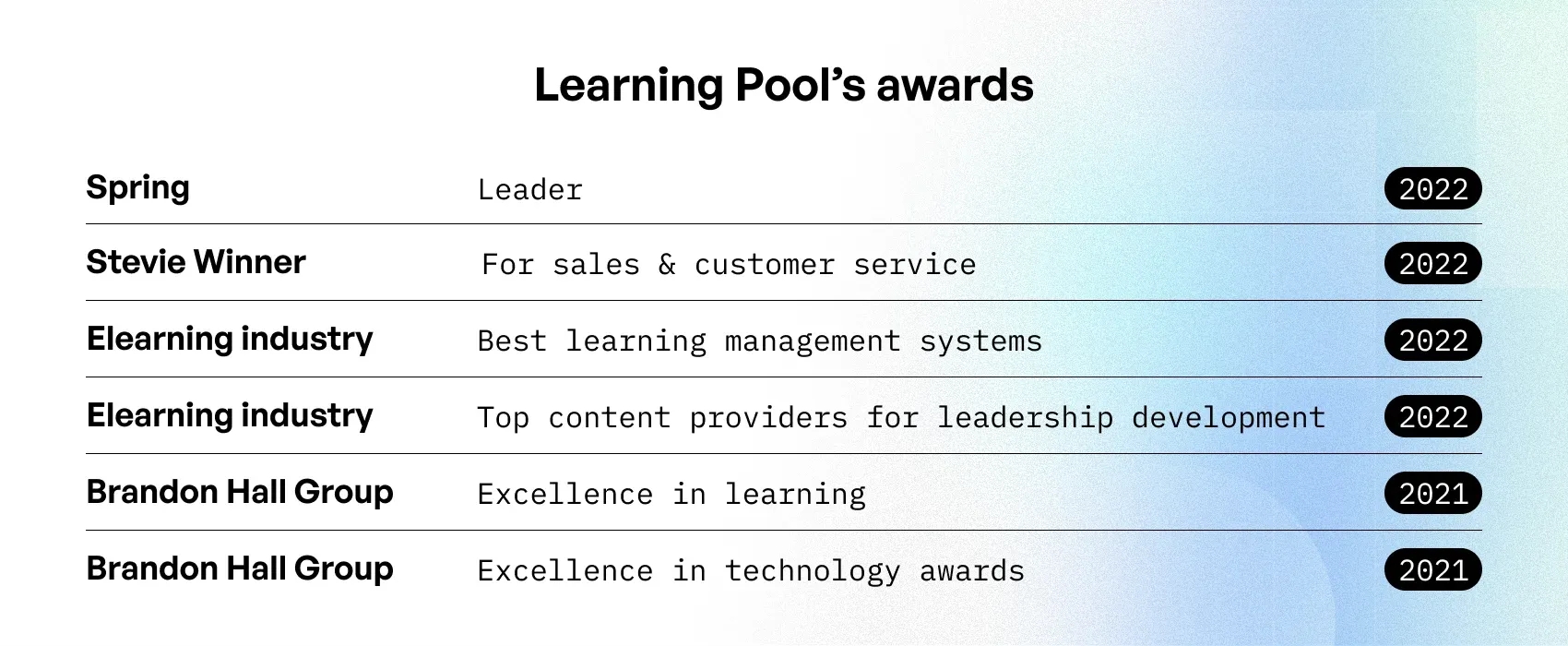
To learn more about this cooperation, read our article eLearning Software Development: Success Story.
Edplus is one more example of how we created a mobile application for self-learning.
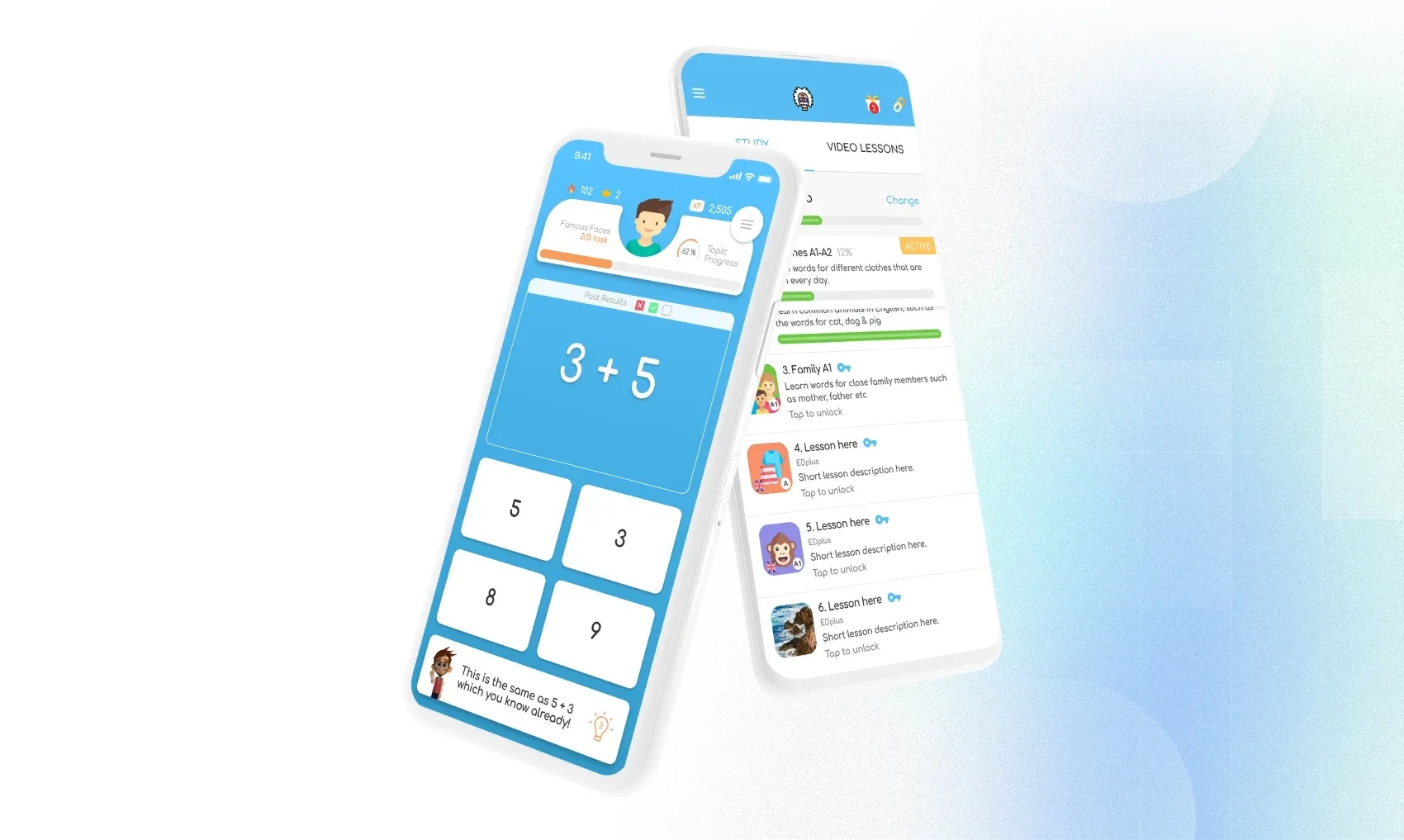
Mobile application for self-learning built by Onix
We've built an educational mobile app for both iOS and Android. Using artificial intelligence technology, we created a learning path for each user.
The app chooses questions in ways most relevant to each learner based on what they already know. EdPlus records how each user has answered the previous questions and uses this data to optimize its teaching strategy.
The system accumulates data of each learner mastering topics and creates 3D learning maps showing each learner’s progress. See the video below:
As a result, this educational app offers 150+ topics to learn, 5,000+ videos to watch, and new content added daily.
Conclusion
The education industry is on the brink of innovation. The potential for positive impact, both on individual learners and the broader global community, is immense.
By adopting the principles of user-centric design, technological sophistication, and a commitment to quality, you are not just building an online education platform; you are shaping the future of learning.
At whatever stage you are with your e-learning website or mobile application development, please feel free to contact Onix if you need a consultation or assistance. We will be happy to help!
FAQ
How can I get an accurate cost estimate for my eLearning platform project?
To get an accurate cost estimate, it's advisable to consult with experienced developers or development agencies. Providing detailed project specifications and discussing specific features and functionalities desired for the platform will help in obtaining a more precise estimate.
Share your eLearning app idea with us, and our experts will calculate your app development costs.
Are there cost-saving strategies for developing an eLearning platform?
Consider prioritizing essential features for the initial release and incorporating additional features in later phases. Open-source technologies and frameworks can also contribute to cost savings.
How long does it take to develop an eLearning platform?
The development timeline depends on project complexity and features. A basic platform may take a few months, while a more complex one with advanced features could take several months or even longer.
Can I incorporate additional features after the initial launch?
Yes, features can be added post-launch through updates. It's important to plan for scalability and flexibility during the initial development to accommodate future enhancements.

Never miss a new blog post from us!
Join us now and get your FREE copy of "Software Development Cost Estimation"!
This pricing guide is created to enhance transparency, empower you to make well-informed decisions, and alleviate any confusion associated with pricing. In this guide, you'll find:
Factors influencing pricing
Pricing by product
Pricing by engagement type
Price list for standard engagements
Customization options and pricing




